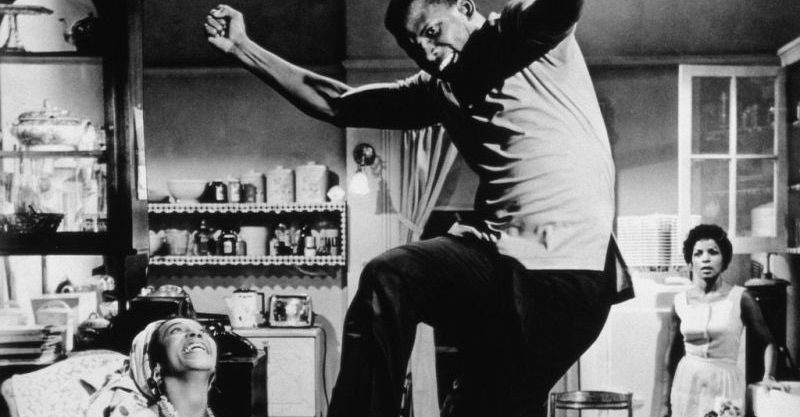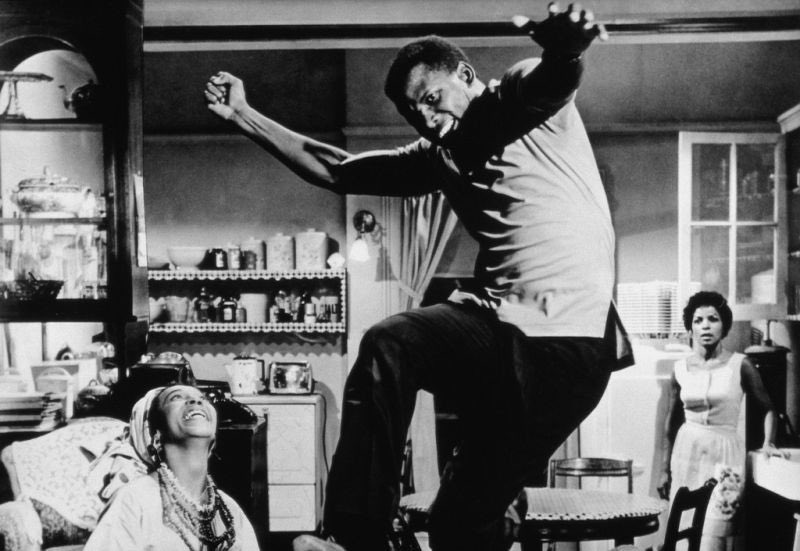Not long ago, the Torrey Honors College added Lorraine Hansberry’s A Raisin in the Sun to our regular curriculum. Any time you drop a twentieth-century text into a Great Books curriculum, you’re taking a gamble: No matter how well the book is regarded, it’s only harvested a measly few decades of reviews, and we prefer to hear multiple generations worth of testimonies to greatness. Most texts in a Great Books sequence have more or less outlived their cultures of origin, and have triumphantly gone on to find new readers in new worlds. Books from 1950s America haven’t had that chance (in fact, in some ways this criterion of centuries is inherently biased against the literature of young nations like America). When we slip a “recent” book (for us, that means younger than a century) into the mix, it means two things: First, we tentatively suspect this is one of the keepers, a book that may plausibly still be drawing readers to itself 200 years from now. And second, we usually have some kind of compelling, contemporary motive: maybe the book is by C.S. Lewis and is a key part of the reason our college exists (The Abolition of Man). Or maybe the book helps connect the dots from the ancient to the present, linking the perennial conversation to our American situation. That’s the case with Raisin: It works very well in a miniature sequence of African-American writings that is carefully threaded into our curriculum as a microcosm. The way Hansberry picks up on themes from Douglass (who we read), quotes a line from Hughes (who we don’t read), and transmits imagery and concepts to King (who we read) shows how well her most famous work performs in a tightly woven curriculum like ours.
One other gamble you’re always taking when you admit a recent book to the Great Books curriculum is the gamble that the recent book will be able to hold its own in any list with Homer, Plato, Dante, Shakespeare, and company. I don’t mean that the book needs to be their equal, or needs to vie to displace them. I just mean it needs to be able to keep company with them and not be conspicuously outclassed. Without going into details here, I would just like to testify that Raisin in the Sun is doing well for our faculty and students in this regard. One question I ask students during oral final exams is, “Is Hansberry’s work more like Sophocles or more like one of Shakespeare’s tragedies?” Never mind the answers students give: the very fact that the question can be asked, and that it spurs thought, and that considering it causes new light to fall not only on Hansberry but on Sophocles and Shakespeare (!) means that Hansberry is a helpful partner in our project.
Because Raisin in the Sun is a play, reading it means staging a little drama inside your mind as you read. Of course it has also been staged in the real world, and even turned into an acclaimed movie. How good is the 1961 movie starring Sidney Poitier? Very good, by which I mean (in this case) that it is remarkably faithful to the play. I read the book and then watched the movie back to back, and my impression was that something like 85% of the content is right there verbatim in the film. A number of excellent lines and conversations were omitted from the film, alas, but I didn’t catch any lines that were added. If you watch the movie attentively, you are getting a pretty pure experience of what Hansberry wrote, and one that runs closely parallel to the text. This is one of those rare cases where viewing the film would be entirely adequate to support serious discussion of the play.
Even though Hansberry was directly involved with the play-to-film transition of Raisin in the Sun, the film is still weaker than the text in a few ways: Hansberry’s stage directions are sometimes a paragraph long (!) and are downright novelistic in their character description (“She is one of those women of a certain grace and beauty who wear it so unobtrusively that it takes a while to notice…Her speech, on the other hand, is as careless as her carriage is precise…”). None of this embedded authorial intelligence is verbally present in the movie, and it’s a real loss. Instead of hearing Hansberry describe Lena this way, we see actress Claudia McNeil enter the scene embodying the description. It’s a trade-off. Sidney Poitier finds new depths in some of the lines that a dozen private readings might not have surfaced, and of course it’s one thing to read about a man standing on a table shouting, and a whole different thing to see and hear a man like Poitier actually doing it!
Maybe the most significant loss from text to film is that the roughly 15% of material that’s left out is not just cut for length; it really seems like the movie cuts were designed to lower the riskiness of the material and make it less uncomfortable for a wide audience. The plan worked: the movie did well. But it’s quite a bit more sanitized and simplified than the play. Beneatha doesn’t get her hair cut; the busybody neighbor Mrs. Johnson doesn’t come over and blurt out the segregationist subtext; the threat of violence is never allowed to be spoken directly in the film; and so on.
For class discussion purposes, assigning the 1961 film would put Hansberry at a disadvantage in her centuries-spanning engagement with Sophocles and Shakespeare. It would make more sense to discuss 1961’s Raisin in dialogue with other films (that would be interesting!). It’s good to have such a solid film version of a text. But the text itself maintains some distinct advantages, and lets readers go a few steps deeper into the meaning of the work.

